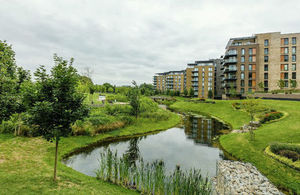Government proposals to place the environment at the heart of new development have been unveiled

Government proposals to place the environment at the heart of new development have been unveiled by Environment Secretary Michael Gove.
In plans published yesterday (2 December 2018) for consultation, developers could be required to deliver a ‘biodiversity net gain’ when building new housing or commercial development – meaning habitats for wildlife must be enhanced and left in a measurably better state than they were pre-development.
The proposed new rules require developers to assess the type of habitat and its condition before submitting plans. Car parks and industrial sites would usually come lower on this scale, while more natural grasslands and woodlands would be given a much higher ranking for their environmental importance.
Developers would then be required to demonstrate how they are improving biodiversity – such as through the creation of green corridors, planting more trees, or forming local nature spaces. Green improvements on site would be encouraged, but in the rare circumstances where they are not possible the consultation proposes to charge developers a levy to pay for habitat creation or improvement elsewhere.
These proposals would help to achieve better outcomes for nature and people with the millions of pounds invested in environmental impact mitigation by developers every year.
While some developers have already been following a biodiversity net gain approach voluntarily, the proposed standardised, mandatory approach would give them clarity and certainty on how to improve the environment through development, while also considering whether any sites – such as small and brownfield sites – should be exempt from the rules. It will still deliver the homes the country needs – making the Government’s vision of delivering 300,000 new homes a year by the mid-2020s a reality – at the same time as contributing to the goal of passing on our environment in a better condition.




